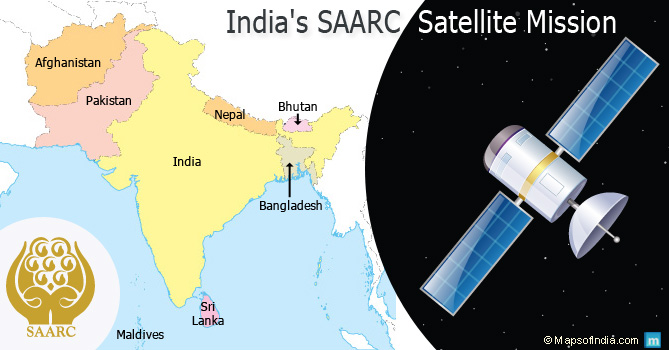“Scientific thought and its creation is the common and shared heritage of mankind.” – Prof. Dr. Abdus Salam
The year is 1961 in history, Soviet cosmonaut Yuri Gagarin, became the first human to journey into outer space. A charismatic 35th President of United States – John F. Kennedy has taken oath and announces his goal to initiate a project to put “man on the moon” – Apollo program. Something similarly historic is happening in Pakistan, where globally renowned physicist Nobel Laureate Prof. Dr. Abdus Salam is convincing President of Pakistan Field Marshal Mohammad Ayub Khan to set up a first space agency in the subcontinent. In September that year, Prof. Salam set up the Space and Upper Atmosphere Research Commission (SUPARCO) headquartered in Karachi. In 1962, SUPARCO with the help from NASA launches its first rocket, Rehbar I, from Karachi shoreline and becomes the third Asian country to launch rockets after Israel and Japan. But despite its head start, the SUPARCO today is decades behind the Indian Space Research Organization (ISRO) in both mission accomplishment and scientific and technical expertise. On 15th Feb, 2017 ISRO broke a world record by sending 104 mini satellites to space with a single rocket. India is also scheduling to reach Venus and revisit Mars by 2040 – on the contrary, Pakistan has had five satellites in space but, today lacks heavy duty launchers and satellite fabrication facilities and SUPARCO is not predictable to have home-produced satellite launching and producing technology for at least two decades.
What happened to the subcontinent’s oldest space agency? The answer is as clear as day – government apathy, poor education funding, corruption and bad governance. The real fall comes in the 1980s when President Zia-ul-Haq cuts off funding to major projects, including the flagship satellite communication launch. Then, military generals are placed atop the organization, replacing scientists and the focus of the SUPARCO becomes countering India, rather than independent research. Conversely, ISRO launched its first communication satellite and started technology sharing programs with several countries and unveiled a remote sensing satellite system that is now the largest in the world. The agency also successfully attracted national talent, helped by its autonomy, sovereignty and scientists at the apex.
Although India’s space policy concentrates very much on civil space purpose, it did not show strong interests in playing a leading role in regional space cooperation until the recent years. In terms of bilateral cooperation, it freshly presented space-based services to the developing countries to meet diplomatic needs. India has lunched satellites for countries that do not have space launch capabilities. Recently, India has taken excellent steps towards utilization of space diplomacy and reaching out to the neighbors with the expertise in space related technologies and space diplomacy has become an innovative and vibrant mantra of the current government. The SAARC satellite may be considered as an excellent example of the Indian foreign policy to strengthening relations with the neighbors. The modular goal of SAARC satellite is to help South Asian countries for scientific advancement, fighting poverty and illiteracy.
On 5th May, 2017 the space became a stratospheric podium for diplomatic relations with the launch of India’s South Asia Satellite, funded entirely by India. The South Asia Satellite weighs 2,230 KG and is carrying 12 top-of-line communication transponders, making it India’s most momentous space project. According to the ISRO official documents, the South Asia Satellite will “enable a full range of applications and services to our neighbors in the areas of telecommunication and broadcasting applications viz. DTH, very small aperture terminals (VSATs), tele-education, telemedicine & e-Health and disaster management support”. The satellite also has the potential to offer secure hot lines among the participating nations, additionally, since the South Asia region is enormously prone to earthquakes, cyclones, floods, tsunamis, it may help in providing critical communication links in times of natural disasters.
Just after the successful launch of ISRO most powerful Indian-made rocket on 5th June, 2017 GSLV Mk III, the space agency launched 712-kg Cartosat-2 series satellite on 23rd June, 2017 which was carried by India’s Polar Satellite Launch Vehicle (PSLV-C38). Indian PSLV crowned with 31 satellites from 15 developing and developed countries, including Austria, Belgium, Latvia, Lithuania and Slovakia. According to ISRO official credentials, “The imagery sent by the satellite will be useful for cartographic applications, urban and rural applications, coastal land use and regulation, utility management like road network monitoring, water distribution, creation of land use maps, precision study, change detection to bring out geographical and manmade features, and various other Land Information System (LIS) and Geographic Information System (GIS) application.”
We are witnessing a fundamental shift in how nations manage their international relations – beyond the classic diplomacy. We are entering in a new world in which knowledge, science and technology, and communication are the key, not only to technological progress and economic prosperity but also, to social cohesion and sustainable development. Technological capabilities in outer space have long been used as an effective tool of foreign policy. The space technologies are playing a vital function in both enhancing productivity in business & economy and facilitating the sociopolitical progress. Pakistan also needs to expand into space diplomacy dynamically as an instrument to expand Pakistani diplomatic influence and soft power projection plus its geo-political and geo-strategic interests. Science and Technology capacity-based diplomacy may very well hold the key to deepening relationships both regionally and internationally for Pakistan. SUPARCO currently administrated by Major General Qaiser Anees Khurram with Rs. 3,500 million (FY 2017-18 budget) must effectively use Pakistan’s space dexterity as a tool in diplomacy and foreign policy not only for regional capacity building and collaboration with developing and developed nations but also for enhancing Pakistan’s role in global framework. Consequently, Pakistan should prolong its efforts in spreading its space diplomatic tentacles to achieve Pakistan’s Space Vision 2040.



No comments:
Post a Comment